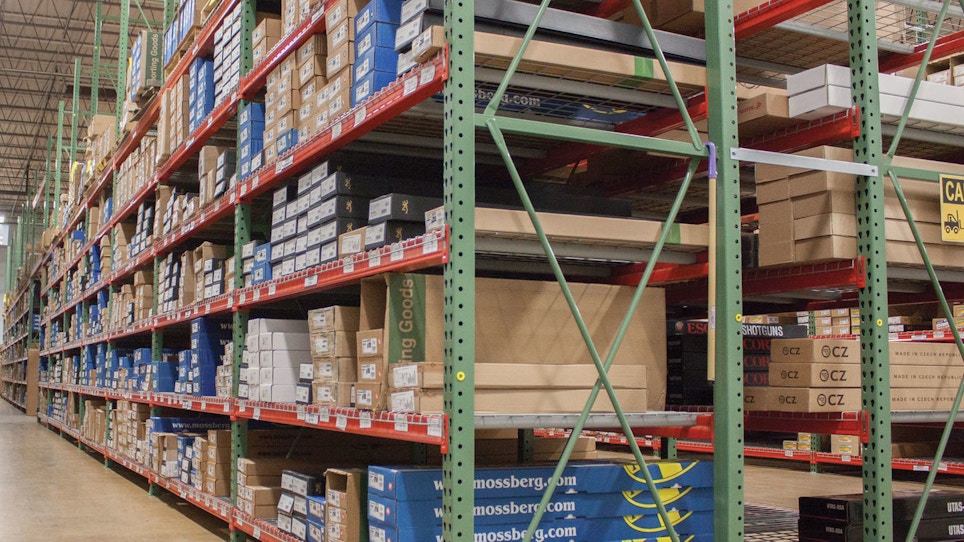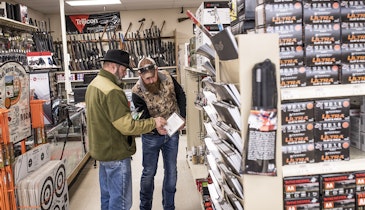Most manufacturers, retailers and competing distributors in the firearms industry know Davidson’s as one of the large powerhouse distributors, but there is more to know. Davidson’s actually started in 1932 as an auto parts wholesaler in North Carolina. Over the years, the company’s wholesale operations became more diverse to include general hunting and fishing supplies, consumer electronics, special liquidation purchases and general sporting goods. During the 1980’s, the company moved to Prescott, Arizona, and began focusing exclusively on the distribution of firearms and other related products.
Today, Davidson’s seems to be everywhere in the industry and even out in front of customers. On top of having one of the largest firearms inventories, Davidson’s has the retail customer- facing Gallery of Guns site, the companion Gallery of Guns TV show, exclusive Davidson’s-only firearm models and sponsorship of special events. Davidsons is also involved in the NRA, NASGW, NSSF and many other shooting organizations.
The company has been innovative in its offerings to dealers. Davidson’s offered one of the first secure online dealer ordering sites providing dealers a way to establish an online e-commerce site for customers or integrate Davidson’s commerce interface into existing sites. A well-known Davidson’s service is an industry-leading lifetime firearms replacement warranty that backs up every firearm it sells.
There are some other unique offers Davidson’s has extended to dealers, including a Sales Wizard Tool to find exactly the gun and configuration a dealer or customer is looking for. They also remain open six days a week and provide links to manufacturer websites, dealer volume discounts, flat shipping and co-op advertising. Another competitive edge offered to dealers is Davidson’s own distributor-exclusive line of firearms. An example would be the multitude of higher-margin, special, limited production colors, finishes and configurations of Ruger firearms that customers and dealers can only purchase from Davidson’s.
Q&A With Davidson's CEO Bryan Tucker
Tactical Retailer had a chance to talk one-on-one with Bryan Tucker, CEO of Davidson’s, about where the company been and where he sees the marketing going.
TR: Your company took a very innovative approach with Gallery of Guns and the Gun Genie, which was a different approach from any other distributor.
Tucker: Gallery of Guns went live around 2001 and was a product of many conversations around how customers and dealers could find not just a standard model, but a special configuration. If you asked, “Where can I find a Springfield two-tone Trophy Match,” it would have been like looking for a needle in a haystack around a multitude of dealers and distributors. Now customers can just search online.
Initially the base of the Gallery of Guns sprang from our B2B dealer website where we had already combined our product images from our color marketing flyers. It was launched for customers initially just to locate non-mainstream products, but now it is used for much more. Gallery of Guns suddenly gave the dealer the ability to sell a gun in our inventory but still run the gun though the dealer to keep that customer in their business. The intent was that those deals would drive more customers in the door even if they found the gun on our website and it was shipped in.
TR: How did the Gallery of Guns TV show happen?
Tucker: We had seen TV-based sales as an opportunity somewhat similar to the QVC model. We approached Intermedia and talked about an idea to do a QVC-type sales/online sales show. They liked the idea of a show that could showcase the newest released guns. In addition, with our priority allocation arrangements with manufacturers, customers could see one of the very first reviews of a new gun. In theory, customers watching the show and using the Gallery of Guns website could also be the first customers in the US with the newest guns on the market. The show definitely drives traffic to the site and we do see sales spikes during each episode.
TR: Has Gallery of Guns been a large percentage of your business?
Tucker: Currently internet sales are still just 25 percent of our sales, however most of them are B2B sales. Online Gallery of Guns retail customer sales represent somewhere around 2 to 3 percent of sales generating 2,000 to 3,000 gun sales a month, but the market is changing. After the big gun rush over the past decade, customers are starting to understand that no dealer will have exactly what they are looking for all the time. Retail customers are now internet savvy and getting more and more comfortable with the concept that they might need to order and ship a gun to their favorite local dealer instead of calling every shop in the area to check to see who has what they are looking for. We see this area growing as the number of distributor exclusive products increase, which delivers something cool for the retail customer and higher margins to dealers.
TR: How have you seen the distribution market change in the past eight years?
Tucker: The market has changed in a lot of ways. The mainstream History Channel gun shows brought in a huge set of new gun owners. It became a more mainstream cool hobby, which was supported by the proliferation of big box stores selling firearms in large, clean, well marketed storefronts with
a friendly non-gun shop feel. Non-gun people and a large segment of females started buying guns at those stores and it jump-started a completely new market for firearms.
TR: Since you mentioned female shooters, how are they impacting guns you stock at a distributor level?
Tucker: There are plenty of ladies out there who do want a pink gun, but there is also another segment of females who do. Limited edition colored gun sales are growing. The Muddy Girl Camo has been an extremely strong seller. Now what was originally just pink pistols has morphed into men buying those specialty guns in tans, greys, camo and other finishes. We are very happy to see a new set of male and female shooters joining in to have the ability to protect themselves and enjoy the shooting sports.
Women in general are more social than men, which has been a great thing for the industry and an incredible opportunity for new female shooters. We are seeing a lot of local and national women-only shooting groups and classes, TV programs featuring female competitors and strong female role models for new female youth shooters. As fast as the female shooter groups are growing, we as an industry must realize that this could realistically become 50 percent of the market very quickly. I believe in driving our purchase decisions to make sure we have the firearms that make female shooters comfortable, inspired and feel like they should be there too.
TR: From a local retailer perspective, most seem to be a bit behind from a technology and marketing perspective. Can you comment?
Tucker: The internet has really changed how sales are driven. Customers are expecting to be able to go to a local dealer website, find and purchase what they are looking for… even if it is the small dealer in the 1,000 square foot strip mall bay in between a martial arts studio and small burger joint. We realize that most of those shops do not have the technical ability, finances or staff to manage that type of more sophisticated e-commerce solution, so we have created solutions for them so they can still participate on the transfer fees while satisfying customer needs.
TR: Are you giving recommendations to dealers about stocking levels?
Tucker: Beyond the elections, unforeseen events and laws can also dramatically and unexpectedly drive or decrease demand. Terrorist attacks have delivered huge sales spikes from people wanting to protect themselves.
All our regular inventory is online and accessible so dealers can look at that and keep tabs on when they should buy if one of these spikes hits the market again. Let the distributors stock the extra stretch inventory you don’t quite have the money for yet. We hate to see dealers fall into an overstocked situation and become cash strapped. This situation is usually realized the day after the sales peak stops and retailers are sitting on too much inventory.
TR: Are we in a glut of firearms or still in an expansion?
Tucker: There is, of course, growth, but we are returning to a more normalized flat growth rate. Manufacturers offered a lot of dealer-direct “buy five and get one free” programs to boost some slowing sales after the frenzy buying of the past election cycles. Essentially, these deals are giving the retailer basically distributor price of those items. In a couple situations, that has put distributors in a situation where we are having a tough time being price competitive with some large aggressive dealers. That impacts the price online, and makes it harder later in the year where the price is at normal levels.
I think the concept was to make up for the sales normalization coming off the sales bubbles. It does erode margin, but it has still been successful. A lot of manufacturers I think are now a little scared to be the first to stop offering those programs, even though sales have picked back up.
TR: What are successful retailers doing?
Tucker: They are taking advantages of promotions and special packages, have e-commerce enabled sites, are marketing, keeping aggressive on inventory and finances. They are also keeping their shops cleaner, brighter, shinier, woman-friendly, presentable and with clean toilets. My old boss would often tell me that you can tell a lot about how a business is run by how clean the bathrooms are.







